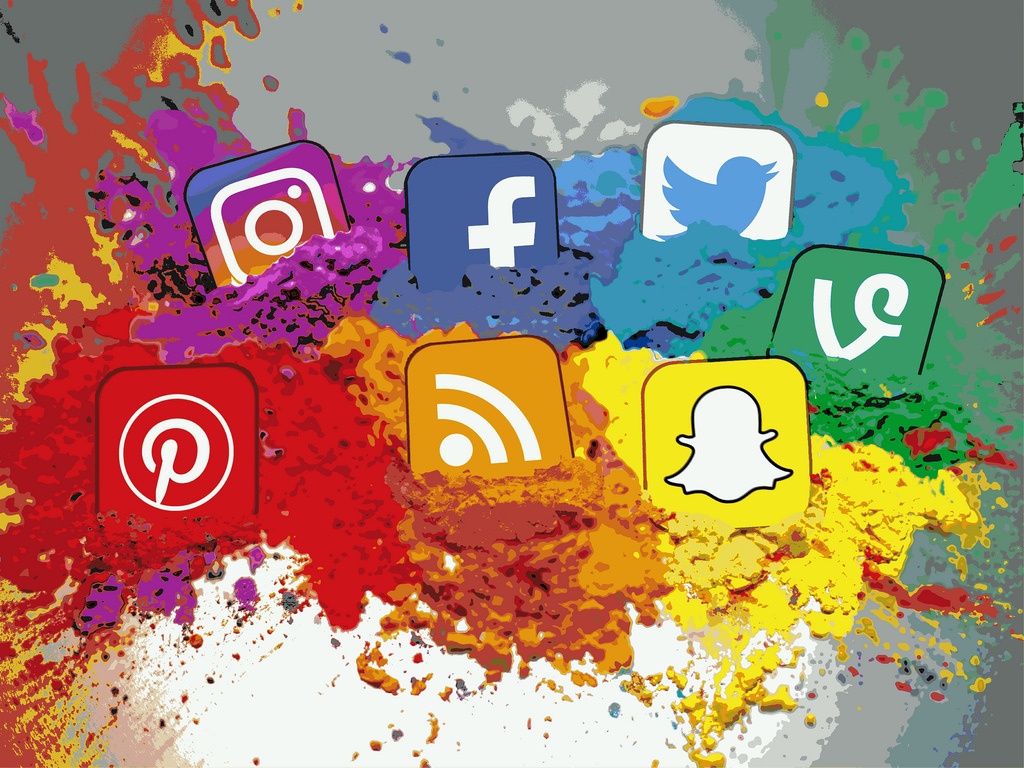
Visibility, we all need visibility at a lower price. Ask any CEO what his top demand for the new year’s content marketing strategy is, and you will likely get this very answer. Brands and contents are becoming inextricably intertwined.
We have just entered the 2017 business arena, and yet some things are already evident: the content challenge is more fierce and wild than ever. The problem, then, is how to become and stay relevant, hopefully spending less to obtain more.
With roughly 27 million pieces of content shared on the web any single day, we can say without fear of contradiction that every person and business is creating and sharing contents.
How can you deal with such a large amount of information? How can you ensure that your pure gold nugget is not lost in the overflowing river? Well, reality is you probably can’t. So many obstacles come out every day.
In the next months, you will have to address different issues. Some come as a legacy of last year; some will be completely new. Concerns around the advertising overdose that afflicts the user experience; concerns about the loss of viewability; the urge to demonstrate the ROI and the measurement accuracy.
We grew up - as marketers and brands - in an era when the most critical part of the job was the ‘production’ of contents. We used to throw the content online with the belief that “A good content will always find its way to the heart of the customers.”
Do it now and wait for the results. Unless you are one of the very few top influencers, there is no way that you can survive without ‘distribution’. Here is where content marketing gets tough today.
There is no content without context: what if the context is continuously disrupted and rewritten? Did you ever think that Facebook would become the second force in the online advertising, up there with Google?
Would you believe that marketers would look again at virtual reality as the upcoming savior? Even more, would you think that a mobile app game (namely Pokémon Go) would crash any record, generating 950 million dollars in revenues in less than one year?
In the last decade, the way we think of the content has deeply changed, due to the emergence of new technologies and devices. The way we used to do content marketing only five years ago may seem outdated, even naive in some cases.
Branded contents have some strict rules. One is to pay attention to the customer journey before planning what to do, how to do it and where to communicate it. More than buyer personas clusters, you will need a holistic view on the personalized journey.
If the personalization of the customer experience becomes mandatory, brands will be forced to create a consistent experience for each customer, no matter what device they are engaging on, where they are and what they are doing.
The upcoming months will be decisive to understanding how your strategy should evolve in the years to come, and if you will be able to build an ever closer relationship with customers and with the technological innovation.

“Less talk, more action”: we could sum up the entire 2017 content marketing trends in this one sentence. Here are some trends that are likely to transform your landscape in 2017 and beyond.
CONTENT VS ADVERTISING
The traditional difference between Paid, Earned and Owned media will still be an integral part of the digital marketing strategy. The advertising scenario, though, is rapidly reaching the saturation point, and companies will move towards earned and owned contents to increase customer engagement and foster loyalty.
THE POWER OF MOBILE
In 2016 we have witnessed a historical moment when mobile searches have overpassed the desktop searches. Right after the AMP experiment, Google is now ready to launch a separated SERP for mobile results, and that means that it is about time to understand how well you communicate with mobile customers.
THE ERA OF THE NICHE
Personalization is the most important keyword to reach relevance in the age of digital customers. You will never engage and monetize your customers if you still believe that the ‘one fits all’ content will appeal your audience. There is no such thing as the audience, in fact. There are thousands of different customers with peculiar journeys, desires, and needs.
TECH-SHAPED CONTENTS
We have said that contents are shaped by the context. Technology is the primary element of disruption of the environment. The smartphone has changed the way we communicate and connect with other people and brands. Your next contents will be influenced by emerging technologies such as Artificial Intelligence, IoT, virtual and augmented reality, new social media.
FORMATS GET CREATIVE
The context is also a matter of formats. In the offline world we had the billboards, now we have the Facebook Canvas. “The format is the message”, we could say with Marshall McLuhan. The power of your contents also descends from the format. In 2017 you must learn to exploit the most innovative formats out there, from Facebook Live to Instagram Stories, from infographics to videos.
THE REIGN OF VIDEOS
Talking about videos, one of the most dominant trends emerged from the ashes of the old certainties is the influence of ‘visual’. Visual contents are the ones that get the higher ‘shareability’ percentage. Because 90 percent of the information that enters the brain is visual: the brands leveraging visual content (videos above all) will see significant increases in their traffic, conversion rates, and acquisition results.
THE REVENGE OF EMAILS
What about the dear old friend email? Is it doomed? Well, actually the stats say the very opposite. The email marketing is flourishing again, following a new approach that is less spammy and more content-driven. When implemented as part of an Inbound marketing strategy, this tool may still prove effective, to engage customers and establish a more human relationship.
THE SUNSET OF NATIVE ADS
While some old tools come back to life, some new trends seem destined to lose momentum. Native advertising, for instance. In the last couple of years, there has been a lot of surrounding native, but companies are quickly realizing that owned contents are stronger than paid, and allow them to control the data. Native is still better than banners, but the rising prices make them less and less profitable.
ENGAGEMENT OVER ACQUISITION
While the advertising is still part of the content strategy, there is a huge difference between content and ads: the first one promotes customer engagement and loyalty; the second one has one primary goal, the acquisition. In 2017 it is now evident that retaining customers is cheaper and more profitable than acquiring new ones. The investments in content marketing will adjust accordingly.
LIVE DATA MAKES GOOD CONTENT
Production and distribution are not the only two phases of the content process. There is a third one, maybe even more essential, and it is the measurement phase. How can you now that your contents are really working if you do not analyze data and measure results? Content marketing is not a joke, it is a business pillar: it requires KPIs, metrics, and a platform to gather and scan the live data stream.
Which trends do you think will have the most evident effects on your business?
Download The Mobile Engagement Playbook, a collection of relevant insights based on many years of Neosperience's expertise that'll help you to overcome the challenges of the digital transformation and grow your business exponentially.



 Your magnifing glass to deeply understand your users and increase the value of each relatonship.
Your magnifing glass to deeply understand your users and increase the value of each relatonship. Listen to the voice of your customers deeply to understand what they truly want.
Listen to the voice of your customers deeply to understand what they truly want. The Lead Generation Platform to get leads from anonymous traffic on your website.
The Lead Generation Platform to get leads from anonymous traffic on your website.  Understand the behavior of people in physical spaces and monitor safety requirements.
Understand the behavior of people in physical spaces and monitor safety requirements. The Digital Commerce Platform designed to follow the most modern technological standards..
The Digital Commerce Platform designed to follow the most modern technological standards.. The XReality platform to tell brand and product stories by connecting physical and digital worlds.
The XReality platform to tell brand and product stories by connecting physical and digital worlds. Points, rewards, levels, badges, missions: a world of nudges to nurture your customer community.
Points, rewards, levels, badges, missions: a world of nudges to nurture your customer community. Discover all the other solutions!
Discover all the other solutions!









